Century: Golem Edition card game review
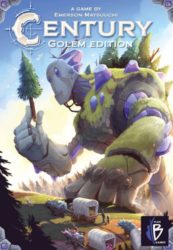
In 2017, Plan B Games published a new board game that quickly garnered tons of praise for being an awesome family game. The game was Century: Spice Road and because of all the buzz, I was anxious to give it a try.
But then I heard Plan B Games was planning to release a differently themed version of the same game that sounded pretty cool. So I decided to wait.
Well, I’m so glad that wait is over.
But even more than that, I’m happy to report that the game has been a HUGE hit in our family!
It’s Century: Golem Edition and we highly recommend it for families everywhere!
In fact, with as much as we’re playing it, I can easily see it making our revised Must-Have Family Board Games list.
Or rather it should be a revision of our Must-Have Family Card Games list because Century: Golem Edition is really a card-driven game with just a few additional components.
So why is it such a solid family card game? It’s time you find out…
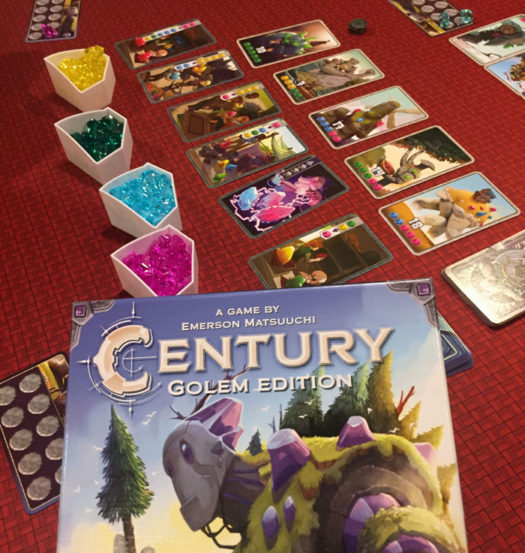
How to play Century: Golem Edition
In Century: Golem Edition players are caravan leaders who travel the famed golem road to deliver crystals to the far reaches of the world. Players collect crystals, trade crystals, and deliver crystals to score victory points. And as you can predict, the player with the most points at the end of the game wins!
To begin, each player gets a Caravan card that shows 10 spaces where they can store their collected crystals during the game. Each player also gets a starting hand of the same 2 cards: “Create 2” and “Upgrade 2”.
Then the two decks of cards are shuffled and some of them are placed out face-up on the table. The first deck of cards are the Merchant cards and 6 of those cards will be placed in a row face-up. The next deck are the Points cards and 5 of those are placed in a row face-up.
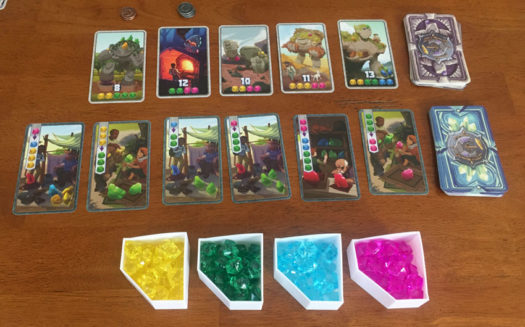
As the name implies, the Points cards are the ones that indicate a point value at the bottom of the card and show the color and amount of crystals that must be turned in to gain the card.
The Merchant cards are what players will add to their hand to generate combinations of crystals that they’ll use to eventually get the Points cards.
On a player’s turn, they take just one action and then play goes to the next player.
A player may choose to do 1 of these on their turn:
- Gain a Merchant card from the face-up row of Merchant cards
- Play a card from their hand and take that action
- Take back into hand all their played cards
- Claim a Point card
1. Gain a Merchant Card
To gain a Merchant card the player can simply take the first card in the row. However, if they want to gain a card further along the row, they must pay for it. To do so, they simply place one of their crystals on any face-up cards the pass over.
For example, if they want the 3rd card in the row, they must place one crystal on the 1st card and one crystal on the 2nd card.
If a player gains a card that has crystals on it, they also gain those crystals.
Once a player has gained a Merchant card, they remaining cards shift in to fill the empty space and a new card is drawn from the deck to add to the row.
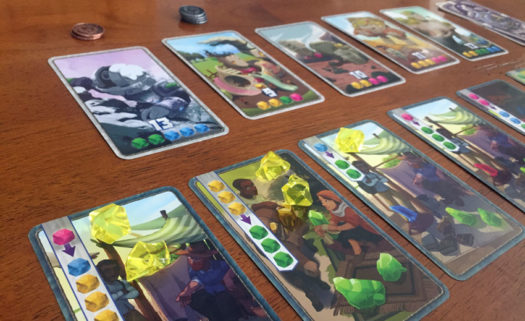
2. Play a Card
To play a Merchant card from their hand, a player simply lays it down in front of them and takes the action indicated on the card. It will either let them gain a certain colored crystal, upgrade some crystals to higher value crystals, or trade crystals of one color for crystals of a different color.
For example, the 2 cards each player gets at the beginning of the game are “Create 2” and “Upgrade 2”. The first allows them to get 2 yellow crystals. The second allows them to upgrade 2 crystals 1 level or 1 crystal up 2 levels. This means they could trade 2 yellows up to 2 greens or 1 yellow up to 1 blue (since the level progression is Yellow, Green, Blue, Pink).
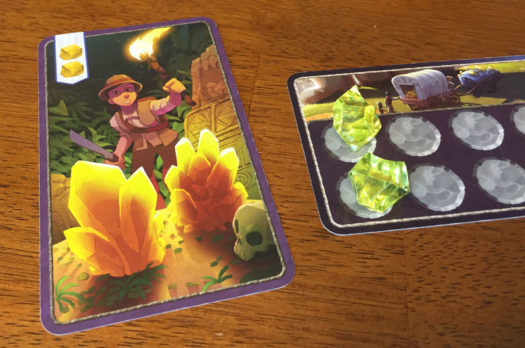
Besides outright gaining crystals or upgrading crystals, a player may have cards that let them exchange crystals for others. A player can do this as many times in a row as long as they have the appropriate crystals available.
For example, a Merchant card that shows trading 2 Blue crystals for 1 Pink and 2 Greens means a player could trade out 4 of their Blue crystals for 2 Pinks and 4 Greens.
However, players are limited to storing a maximum of 10 crystals on their Caravan card. So they must be judicious in their exchanges.
3. Take Back Played Cards
Once a player has played a card, they won’t get it back in their hand until they choose this action. This action is called, Resting. It lets a player take all their played cards to that point back into their hand.
But players don’t have to play all their cards before choosing this option.
If they have a hand of 6 cards, they may choose to Rest and take cards back into hand even after playing just 4 of them.
Deciding when to take cards back into hand is a key factor in the game.
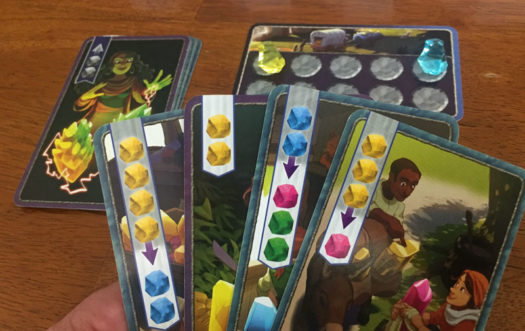
4. Claim a Point Card
Since the ultimate outcome of the game rests on who has the most points, players will want to take this action as much as they can. However, they can only do so once they’ve collected the right amount and color of crystals required on the Point cards.
The good news is that players can claim any face-up point card they want.
Yet, there’s also a bonus for taking the 1st or 2nd card in the row. That’s because next to the 1st card in the row is a stack of Copper token that are each worth 3 points at the end of the game. And next to the 2nd card in the row is a stack of Silver tokens that are each worth 1 point at the end of the game.
The amount of tokens next to those cards is twice the number of players in the game.
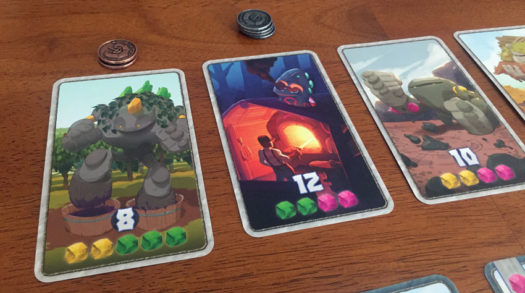
Like with the Merchant cards, once a card is claimed, all the cards in the row shift to fill in the empty space and a new Point card is drawn and placed face-up in the row.
Once one player has claimed their 5th Point card (or 6th in a 2 or 3-player game), the game will end after players finish out that round.
Then players total up their points. The Point cards are equal to their printed value. The tokens are either 3 (copper) or 1 (silver) point. And any non-yellow crystals a player has on their Caravan card are also worth 1 point each. The player with the most points wins!
Can the whole family enjoy playing Century: Golem Edition?
Like we said in the beginning, Century: Golem Edition is a fantastic board game for the whole family!
It’s a game that both young and old players can all enjoy playing together. The game play is straightforward yet also offers enough choices due to the variety of cards and when they appear to keep players coming back for more.
Young players will love collecting crystals as well as exchanging them for more powerful combinations of crystals. And older players will realize there’s also depth of strategy involved in the choices they make.
Besides the starting 2 Merchant cards that all players get, every Merchant card is unique. This means every player will have to find their own want to gain and convert crystals to the combinations they need to claim points cards. It also means that luck plays a roll in the game.
The good news is that there’s just the right mix of luck and strategy to make it an engaging game for families.
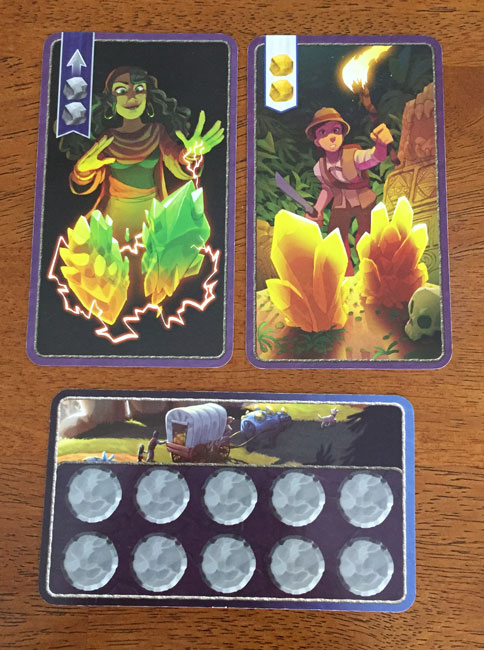
What we love about Century: Golem Edition
The game play in Century: Golem Edition may seem almost too simple. Players just collect crystals, convert crystals, and use them to buy victory points.
But that’s also the beauty of it!
There aren’t a lot of rules to remember and keep straight. It’s so easy to sit down and fly through playing a game without any trouble.
This also makes it very easy to introduce to new players.
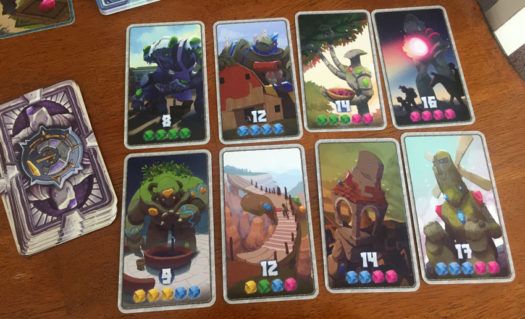
Yet, as soon as you start playing, you’ll notice the nuances of choices below the level of simplicity.
When you see a good card come out in the Merchant card row, how much are you willing to pay for it so that other players don’t take it before it gets back to you?
When should you claim a point card? Do you wait until it makes its way to the 1st or 2nd slot to also get a bonus token or grab it as soon as possible?
When should you take your cards back into hand so you can maximize your exchanging combos?
And since all players can see the crystals on their opponents’ Caravan cards, it will definitely influence the choices they make.
For example, you’ll be able to compare what crystals are on an opponent’s with the crystals required of point cards and assess which point cards they may be aiming for. Will you be able to get to it first?
But players can also use that to their advantage to bluff other players. Because all of a sudden, they may play a card that converts all those crystals to different sets of crystals to snag a different points cards.
There’s all that watching and guessing that makes the game a blast to play!
Another thing we love is how quick player turns are.
Since players only take one action on their turn, game play goes by very quickly. Before you know it, it’s back to your turn.
The only downside to having only one action is that you’ll definitely want to do more. Because as soon as you get the right crystals to claim a point card, you’re going to want it right away – before someone else snags it.
We also love trying to make great combos from the Merchant cards (gain this color, upgrade to this color, exchange for this set of colors, etc.). And since all Merchant cards are unique, every game will play out differently this way. It’s fun trying to figure out different combos each time we play.
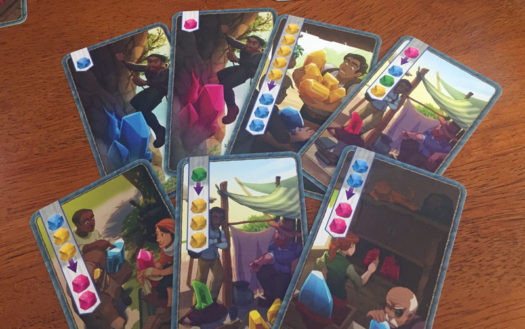
And of course, we love the artwork and crystals!!
The original Century: Spice Road has a theme of trading spices where the components are small wooden colored cubes. I first played the game at SaltCon a few months ago. But I can affirm that game components make a huge difference and the crystals in Century: Golem Edition make this such a more fun experience for us!
It may sound silly and trite, but it’s true. If you don’t believe me, here’s the test: Set up a copy of Century: Spice Road and Century: Golem Edition on a table and see which one the kids flock to. I’ll guarantee you it will be the Golem edition.
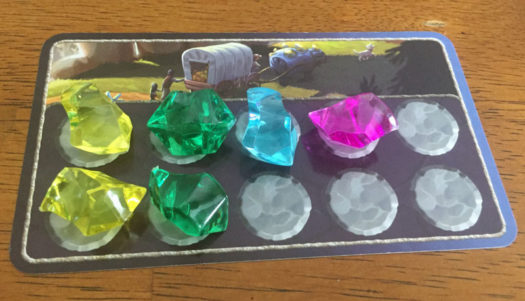
You’ll even notice that the artwork on the cards exactly match the action of the card. For example, if the card lets you collect a blue gem, the card art also shows a person finding a blue gem. Likewise, when exchanging gems, you’ll notice the characters on the card are also exchanging those exact colors and quantities. That’s fantastic detail to put into the artwork!
That last thing we’ll mention that we think is pretty cool is the detail in picking the starting player. Rather than saying “youngest player goes first” or “the last person to see a golem goes first”, the player Caravan cards have the clue. Players deal these out face down and then reveal them. The player who has the Caravan card with a crystal symbol on it is the starting player.
It may be a small touch, but we think it’s awesome.
If you can’t tell yet, we think Century: Golem Edition is fantastic and highly recommend it!
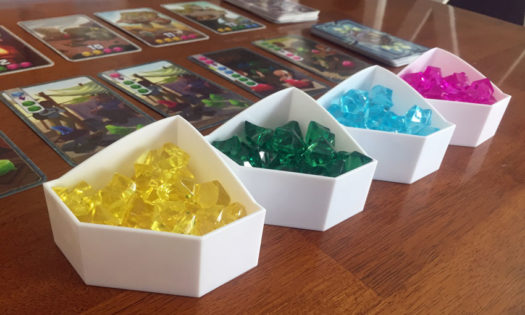
How does Century: Golem Edition score on our “Let’s Play Again” game meter?
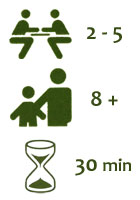 If you haven’t guess already, Century: Golem Edition scores very high on our “let’s play again” game meter.
If you haven’t guess already, Century: Golem Edition scores very high on our “let’s play again” game meter.
Not only is it a game that gets many immediate calls for “let’s play again” but also one where the answer is often, “you bet!”
In fact, we’ve only had the game for a few months now and it’s already sitting atop our most-played games of the year.
Go ahead and grab a copy for your family!
We’d like to thank Miniature Market for a review copy of Century: Golem Edition.

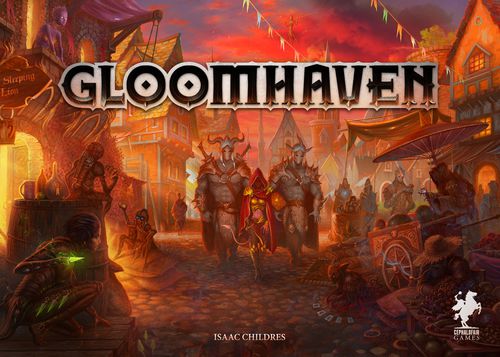
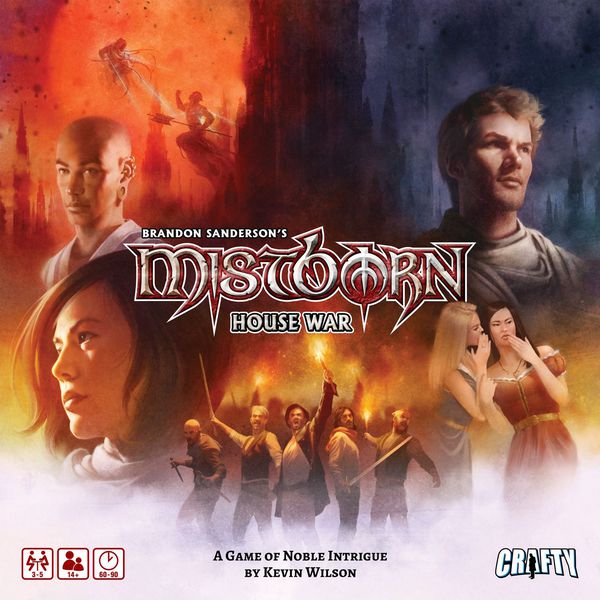
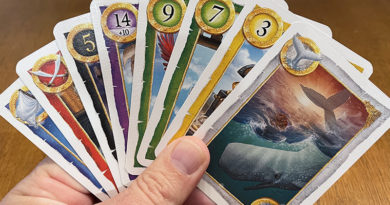
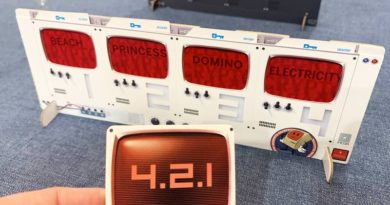
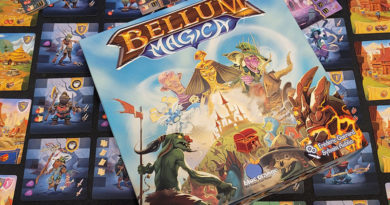
Thanks for the write up. I had also played Spice Road at SaltCon and really enjoyed it. I was curious how this one would compare since (as far as I could tell) the art/theme/components was the only change. It sounds like that change is enough to make it compelling.
Okie – It’s made a big difference in my book. And I don’t think our kids would take to it much as Spice Road.
This is also a huge hit in our family as well. Our 7 year old twins play with with ease (and often win!) They also have been able to teach it to other kids within our homeschool community. It sees so much play I may grab another copy to put away:)
Jen – That’s great that your twins teach the game to other kids so they can all have fun together!